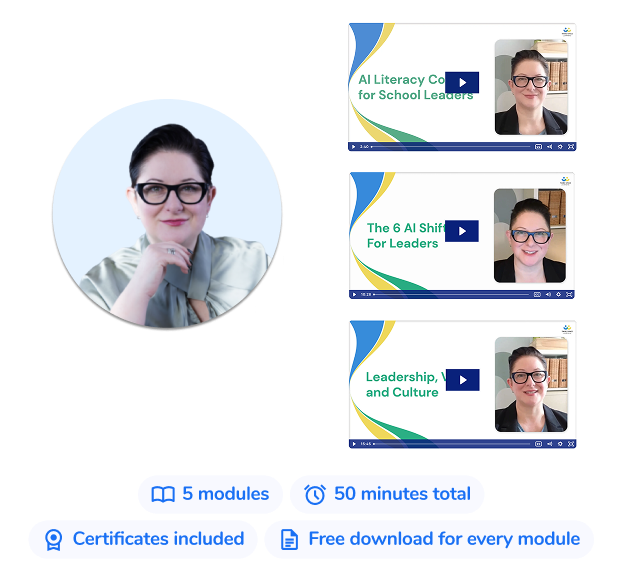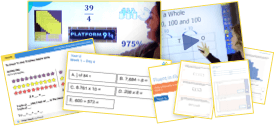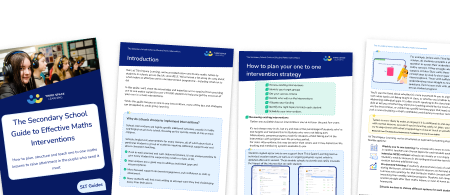GCSE Intervention Strategies: Making The Most Of Your Extra Lessons
After the global pandemic in 2020, many secondary schools implemented additional GCSE intervention strategies for their Year 10 and 11 students. The ongoing impact means students still need and benefit from these additional strategies. Here we look at some of the options available to you and how to get the best out of your GCSE interventions, particularly in maths.
GCSE MATHS 2026: STAY UP TO DATE
Join our email list to stay up to date with the latest news, revision lists and resources for GCSE maths 2026. We’re analysing each paper during the course of the 2026 GCSEs in order to identify the key topic areas to focus on for your revision.
GCSE dates 2026
GCSE results (2026 when available)
Get ahead on revision with the GCSE maths papers analysis from 2025:
Analysis of GCSE Maths Paper 1 2025
Analysis of GCSE Maths Paper 2 2025
GCSE Maths Paper Analysis and Summary 2025
GCSE Maths Teacher Survey Results 2025
Learning loss estimates
The pandemic and resulting school closures significantly affected students’ learning in maths. Research published by the EPI in January, Spring and end of Summer Term in 2021 showed that in primary schools:
- Average learning losses were 3.4 months in maths and 2.2 months in reading–March 2021
- Losses had recovered to 2.2 months in maths and 0.9 months in reading–June 2021
In secondary schools:
- In reading, secondary students saw losses of 1.5 months of learning–Autumn term 2020
- Losses remained at 1.2 months–Summer term 2021
- There is also some indication of regional differences with students in the North East and Yorkshire and Humber experiencing the greatest impact – and indeed struggling to make it up even after time at school.
The Secondary School Guide to Effective Maths Interventions
Find out how to plan, manage, and teach one to one (and small group) math interventions in Key Stage 3 and GCSE.
Download Free Now!The picture for disadvantaged students was the most severe. Even after time back in school, learning losses in spring for disadvantaged students were 4.2 months in maths and 2.7 months in reading for primary.
While primary students made up some of these losses, the picture for disadvantaged secondary school students was not as optimistic:
- Autumn term 2020 reading loss of 1.9 months rose to 2.4 months by the summer term in 2021.
Inevitably effects have been greatest on those students commonly identified for additional support. For example, students receiving free school meals, students with English as an additional language, and those with learning or support programmes in place.
Maths attainment concerns
A report by the Centre for Education and Youth (CfEY) found that maths was the most affected subject for post-pandemic learning loss. It is also the subject where the link between KS2 performance and eventual GCSE performance is the strongest.
This report suggested that the solution with the greatest impact is one to one tuition. One to one maths tutoring can form part of your pupil premium strategy and funding can be used to help close the maths attainment gap. We will look at maths tutoring in greater detail in this article.
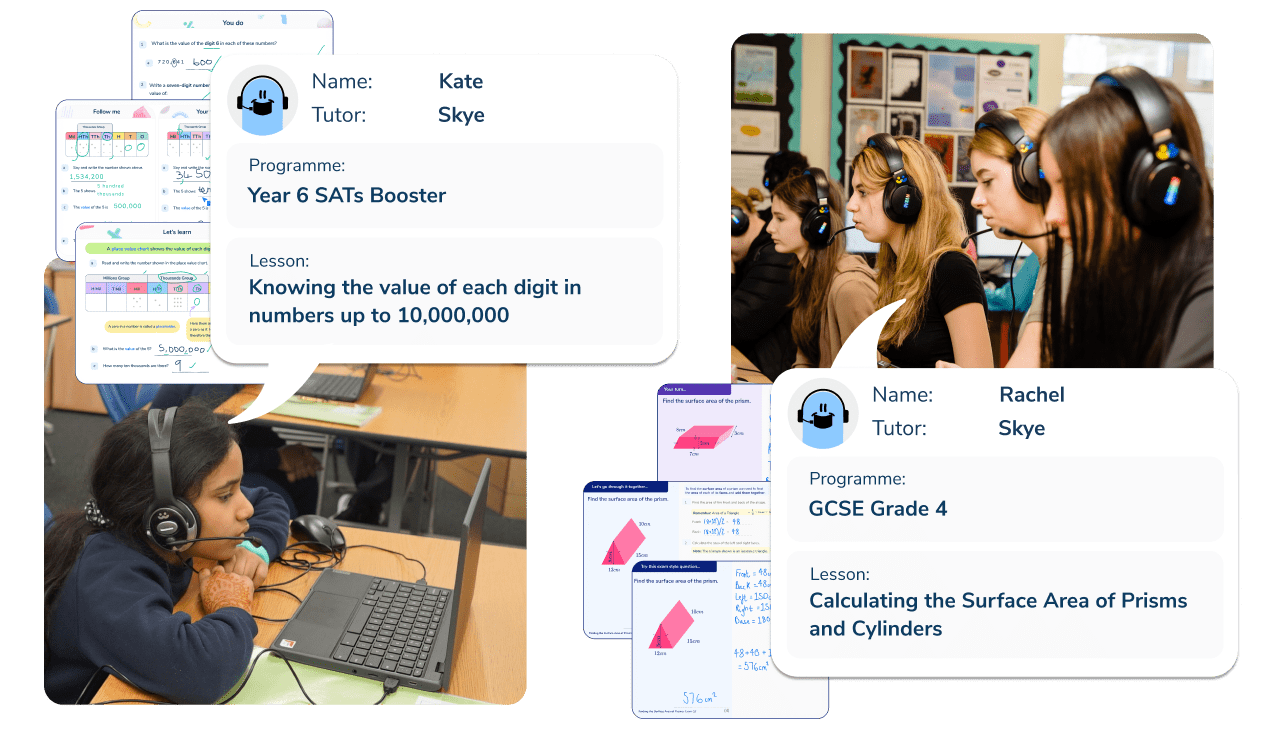
Meet Skye, the voice-based AI tutor making maths success possible for every student.
Built by teachers and maths experts, Skye uses the same pedagogy, curriculum and lesson structure as our traditional tutoring.
But, with more flexibility and a lower cost, schools can scale online maths tutoring to support every student who needs it.
Watch Skye in actionThe return of GCSE maths
After several years of disruption, GCSEs are now pretty much back to normal. With internal resources stretched, many schools have experienced the benefits of external GCSE intervention strategies to help support students make additional progress and succeed in their exams.
EFFECTIVE AND AFFORDABLE ONLINE MATHS INTERVENTIONS
Third Space Learning has provided online one to one maths tutoring to over 4,000 schools across the UK since 2013.
Maths experts and former teachers carefully create each lesson to ensure it aligns with the national curriculum and a range of GCSE exam boards, including Edexcel, AQA and OCR.
Sessions take place in our virtual classroom and students communicate with AI tutor, Skye, through high-quality headsets and classroom tools. Because lessons are online, multiple students can access one to one maths tutoring simultaneously and at a time to suit your school schedule.
See what other Third Space Learning schools have to say in our case studies.
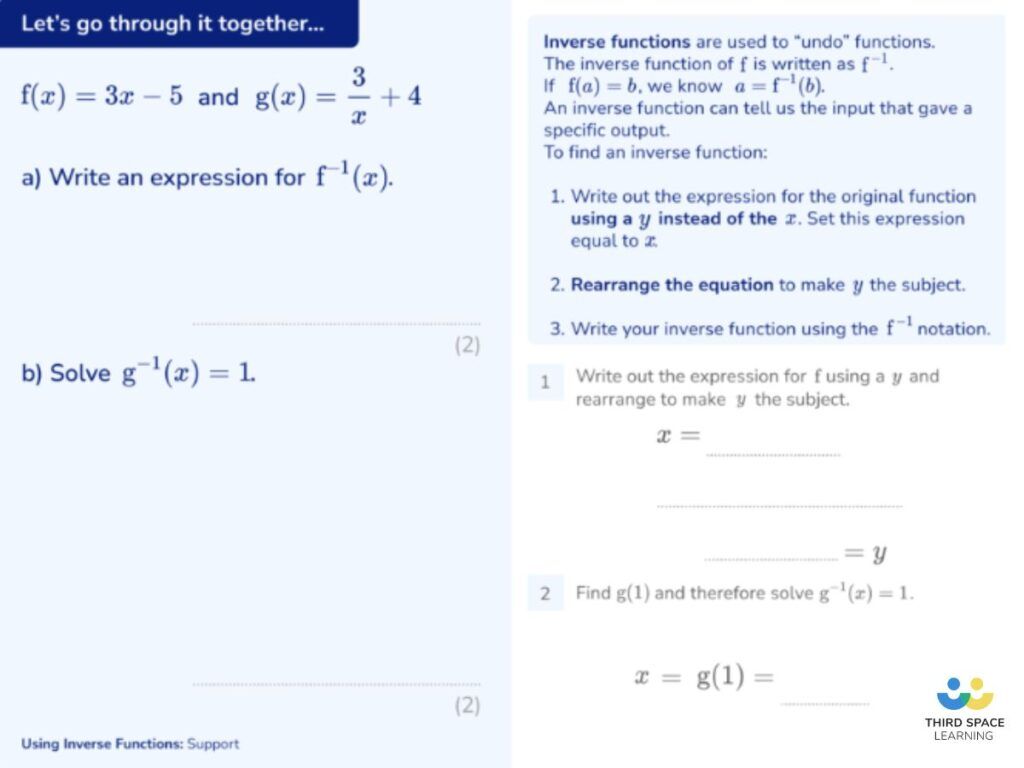
Who: identifying students for intervention
The first step, as with any intervention, is to identify which students to target. Likely, the students who have traditionally always needed or been targeted with extra support will be the ones most affected by learning loss. However, considering learning loss, you might need to provide GCSE interventions for more students than usual.
You can use the standard systems already in place to identify students at risk of not reaching their target grade. These will likely include:
- Close monitoring of FSM, EAL, and SEN students.
- Students with chronic absenteeism due to illness or isolation.
- Use of ongoing formative assessments and summative end-of-year assessments.
As usual, it may be appropriate to target borderline grade 4 and grade 5 candidates as you draw closer to the exam period.
When developing your maths GCSE intervention strategies, it’s often helpful to read any past paper maths analysis for foundation and any past paper maths analysis for higher.
What: consider the type of intervention
One-to-one tuition
One-to-one tuition is the most effective GCSE intervention. According to research from the Education Endowment Foundation (EEF), it delivers an additional five months of progress on average. The EEF teacher toolkit suggests that “short, regular sessions (about 30 minutes, three to five times a week) over a set period (six to twelve weeks) appear to result in optimum impact”.
However, delivering this kind of intervention at scale in a typical school environment is often impractical. Costs and timetabling cause constraints, particularly as the average school period is 60 minutes, and it would be unlikely that a student could be released from lessons up to five times a week.
Third Space Learning aims to remove these obstacles by offering flexible online one to one tuition that allows up to 30 students to receive targeted and individualised lessons simultaneously with their own online AI maths tutor.
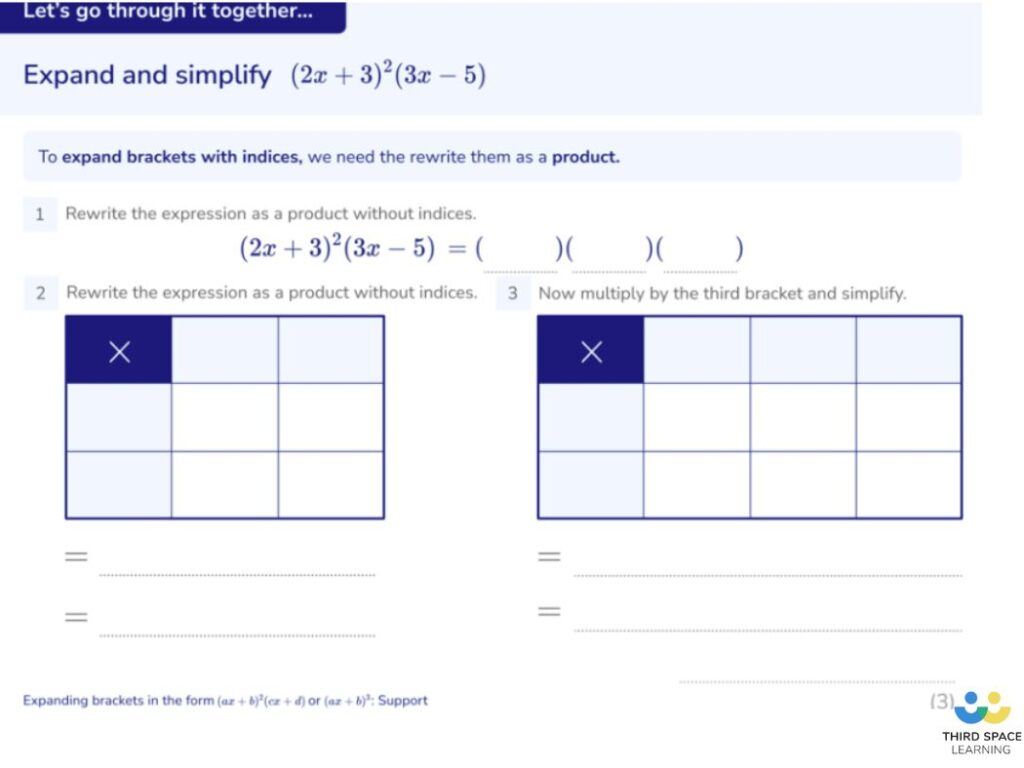
The EEF estimates costs of £700 per pupil for 30 hours tuition or £350 for 15 hours. Because Third Space Learning’s GCSE maths tuition takes place online, they are up to 56% cheaper than your average one to one maths tuition sessions.
Small group tuition
Evidence from the EEF indicates that small group tuition can be effective, although the smaller the group, the better. The EEF suggests that a group size larger than six or seven results in a noticeable reduction in effectiveness. They further suggest that the quality of teaching has a similar impact as group size. It may be more effective to deploy a more experienced member of staff with a larger group than it would a newly qualified teacher.
The advantage of small group tutoring over one-to-one tuition in a typical school environment is cost. As group size increases, the cost per student reduces. There is limited data on the optimal group size. It may vary depending on the students and teachers involved.
However, in any group of students, there is likely to be a great range of learning gaps which won’t always be answered by whole-group teaching.
One to one Vs small group tuition
Traditionally small group tuition is viewed as a more affordable option for schools even despite the more ‘generalised’ approach of the intervention. However, Third Space Learning is committed to being a cost-effective solution for schools by providing high-quality one to one GCSE interventions within school budgets.
Diagnostic assessment: the intervention essential
A key part of any intervention is the diagnostic assessment. It helps teachers and intervention providers understand where student’s learning gaps are so they can provide targeted support to close the maths achievement gap.
At Third Space Learning, each student sits an initial diagnostic assessment before their first tutoring session. This helps identify students’ starting points, knowledge gaps and misconceptions. After each session, students answer a few post-session questions to check their understanding of the session. This helps AI tutor, Skye, adapt its teaching strategies to ensure maximum student progress.
Peer tuition
This option is sometimes overlooked, but once set up, peer tutoring can be an effective way of providing smaller, short term interventions. For example, if a student misses a lesson or needs to recap and secure understanding, a peer can help.
Vertical tutoring systems usually have an older student explain things to a younger student. It’s an effective use of sixth-formers with the bonus for them that it’s something to add to their UCAS form.
Even if tutor groups are arranged by year, it is possible to arrange a core group of older students to act as mentors during registration or pastoral time.
I would add a caveat that I’ve only found peer tuition effective in short bursts for small interventions. If there is a deep misconception, or a large chunk of work missed, students need subject specialist support.
When: scheduling interventions
Timetabling can be problematic for school interventions. Creative use of registration or pastoral time is an effective strategy, although this depends on the length of these periods and staff availability.
Morning interventions
At one of my previous schools, we ran an intervention session in the 25 minute morning registration slot using three members of the maths department staff who had been freed up from pastoral duties for the year.
Most students were rotated on a half-termly basis. Some had a weekly check-in and review of that week’s work. Others followed a more intensive program of basic skills work five times a week.
After school sessions
After-school sessions are another effective GCSE intervention strategy. One school I worked at ran two after-school sessions. One was an optional ‘drop-in’ session for students to self-refer if they felt they needed extra help. The other was a compulsory teacher referral session.
The drop-in session was well-attended by Year 11s, particularly in the run-up to mock exams and in the Spring term. Many of them wanted a quiet place to revise or complete homework with the option to get immediate feedback and assistance from staff if they needed it.
The compulsory session was used for short-term interventions for students who had either missed content or had been identified from their classwork or assessment results as in need of additional support. They were asked to attend one, two or three sessions in a block with specific work to complete.
Off timetable lessons
Some schools remove students from timetabled lessons for additional support in core subjects. However, from experience, withdrawing students from lessons they are invested in means they are more likely to arrive at their intervention session with a less-than-positive attitude.
Work with the individuals
Don’t assume that all students have the same response to being removed from certain lessons. You might find six out of ten of the students identified for intervention are happy to come out of PE, but you’ll get significantly better buy-in from the other four if they can do a session at another time.
How: intervention strategies to make your GCSE sessions effective
Regardless of the type of intervention chosen or when this occurs, there are a few maths intervention strategies that I would suggest to make intervention sessions more effective.
1. Student buy-in
Sessions are far more useful if students turn up with a positive mindset. They need to buy into the additional support and not feel like the intervention is being ‘done to them’.
Focusing on the individual’s end goal can be incredibly useful. Do they need to achieve a certain grade for their next steps/college course/A Level?
2. Link learning to class teaching
EEF research indicates that both one-to-one and small group tuition is most effective when carefully linked with classroom teaching. The most straightforward way to achieve this is with a curriculum plan that has all staff teaching the same topics at the same time. This way, the member of staff delivering the intervention session doesn’t have to spend time chasing the rest of the department to find out what content needs teaching to which student. If this is not already the case for your cohort of Year 11s, it may be an option to consider.
Content on the Third Space Learning intervention can be linked to classroom teaching. During set-up, teachers can choose to keep the programme default order, prioritise students’ learning gaps or arrange in a custom order to best match classroom learning.
3. Student ownership
As exam season gets closer, many Year 11s develop a better idea of their strengths and weaknesses and can identify gaps in their understanding. It might be appropriate at this time to set aside a small amount of time during each intervention session to work on a topic selected by students. In a small group situation, this could be chosen on a weekly rotation. Encourage them to set small, manageable targets, such as completing some practice questions for the next session.
At the end of each session, students are encouraged to consider what they have learnt that day. What was their biggest takeaway? What could they improve on? What have they excelled at?
4. Intervention for all
While effective GCSE intervention strategies should support those who need them the most, be mindful of those who aren’t offered lots of additional support. Some perceive it as unfair that they work hard and don’t get extra help. Particularly if they also have the perception that some of those receiving intervention have a poor work ethic or don’t put as much effort in during class time. This is where relatively low-cost strategies such as an open drop-in session can be useful.
Third Space Learning believes all students should have the opportunity to access extra support, not just those signed up for the intervention. That’s why you’ll find many free maths resources in the GCSE maths resource library. It’s full of GCSE maths worksheets and maths lessons to help every student prepare for their GCSE exams. Teachers can also find plenty of ideas for in class teaching and support on the Third Space Learning blog.
See also: Fluent In Five For Secondary
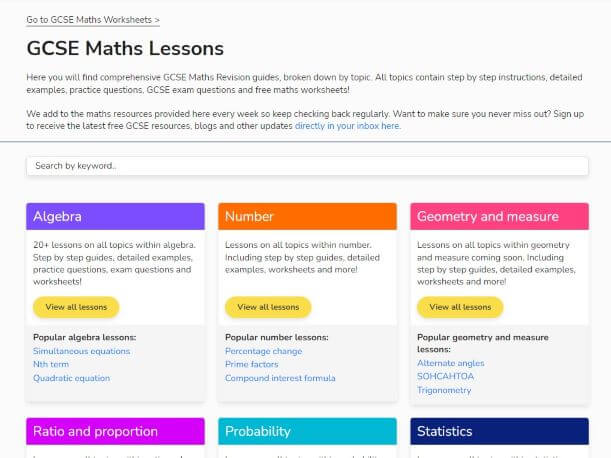
Planning for the year ahead
The primary goal for GCSE intervention for Year 11s is to hit the ground running with effective strategies already in place. You’ll likely identify a core group of students during face-to-face teaching sessions in the autumn term. Organising immediate support for them will set the pace for the year ahead. Initially, a programme like the EEF’s short, regular sessions, for the first half term could work.
For maximum impact, these sessions should link to classroom learning. However, if this isn’t feasible, I’d suggest some intensive work on calculation, proportion, numeracy and problem-solving skills, particularly for foundation candidates.
Proactively identify students with topic-specific GCSE maths revision gaps. They may be able to close these gaps themselves with support and direction to appropriate resources such as formula sheets, or they may benefit from a very short burst of additional tuition.
Finally, although I’ve focused almost exclusively on Year 11 in this article, almost all suggestions are relevant for Years 7-10. Where resources and funding allow, similar programmes for the other year groups could help to mitigate some of the lost learning over the last eighteen months.
Read more
DO YOU HAVE STUDENTS WHO NEED MORE SUPPORT IN MATHS?
Skye – our AI maths tutor built by teachers – gives students personalised one-to-one lessons that address learning gaps and build confidence.
Since 2013 we’ve taught over 2 million hours of maths lessons to more than 170,000 students to help them become fluent, able mathematicians.
Explore our AI maths tutoring or find out about maths intervention programmes for your school.
